Have a spot of trouble substituting shrimp paste? It can be quite difficult to substitute this paste, but there are still a few great options available, ranging from delicious Asian sauces and even some sambal substitutes. I’ve got these and more! You substitute shrimp paste with miso paste, seaweed, fish sauce, and soy sauce. But this isn’t all! So, let’s dive into all the shrimp paste substitutes I managed to rummage up!
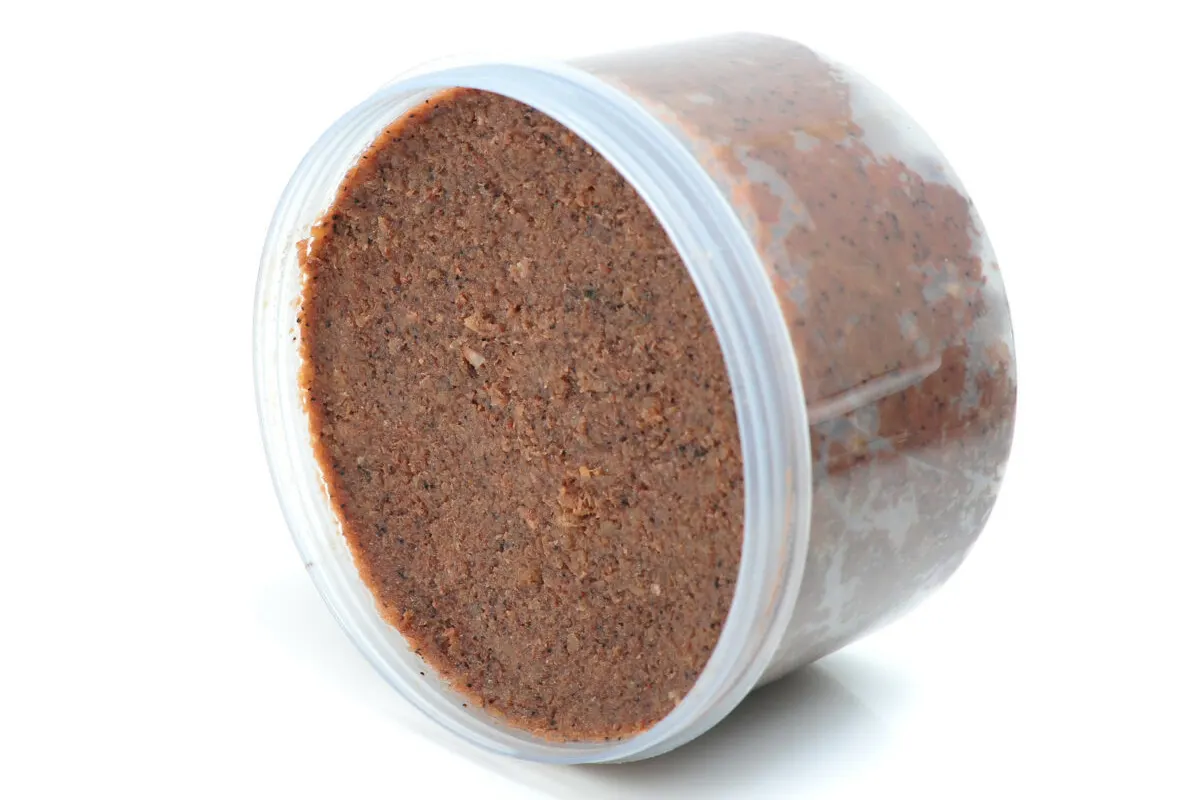
Jump To
🤷 What is Shrimp Paste?
Shrimp paste is a popular ingredient in Southeast Asian cuisine, especially in Thai, Indonesian, and Malaysian dishes. It’s made by fermenting ground shrimp with salt and leaving it to dry in the sun. The result? A thick, pungent, and salty paste that adds a delicious, unique umami flavor to dishes. This paste is commonly used in repurposing leftover curry, stir-fries, and dipping sauces.
🧑🍳 How to Make Shrimp Paste
To create shrimp paste, start by thoroughly cleaning fresh shrimp and removing the shells. Mix the shrimp with salt and allow it to sit for a few hours to draw out moisture. Then, grind the shrimp into a paste using a food processor or mortar and pestle. Shape the resulting paste into small balls and leave them to dry in the sun for several days, turning daily for even drying. Once the balls are completely dry, store them in an airtight container for future use.
📌 How to Use Shrimp Paste
Use it in small amounts: Shrimp paste has a strong flavor, so it’s important to use it sparingly. A little goes a long way, and adding too much can overpower other flavors in the dish. Start with a small amount and taste the dish as you go, adding more if necessary.
Roast it before using: Roasting shrimp paste can help to mellow out its strong flavor and bring out its nutty, caramelized notes. To do this, wrap the paste in foil and roast it in the oven at 350°F for 10-15 minutes, or until fragrant.
Mix it with other ingredients: Shrimp paste can be mixed with other ingredients to create a flavorful paste or sauce. In Thai cuisine, it’s often combined with chili peppers, garlic, and other spices to make a spicy dipping sauce. In Filipino cuisine, it is mixed with vinegar and garlic to make a sauce for pork chops and meats.
Use it in soups and stews: Shrimp paste can be added to soups and stews to give them a rich, savory flavor. It’s commonly used in Filipino sinigang, a sour soup made with tamarind, vegetables, and meat or seafood.
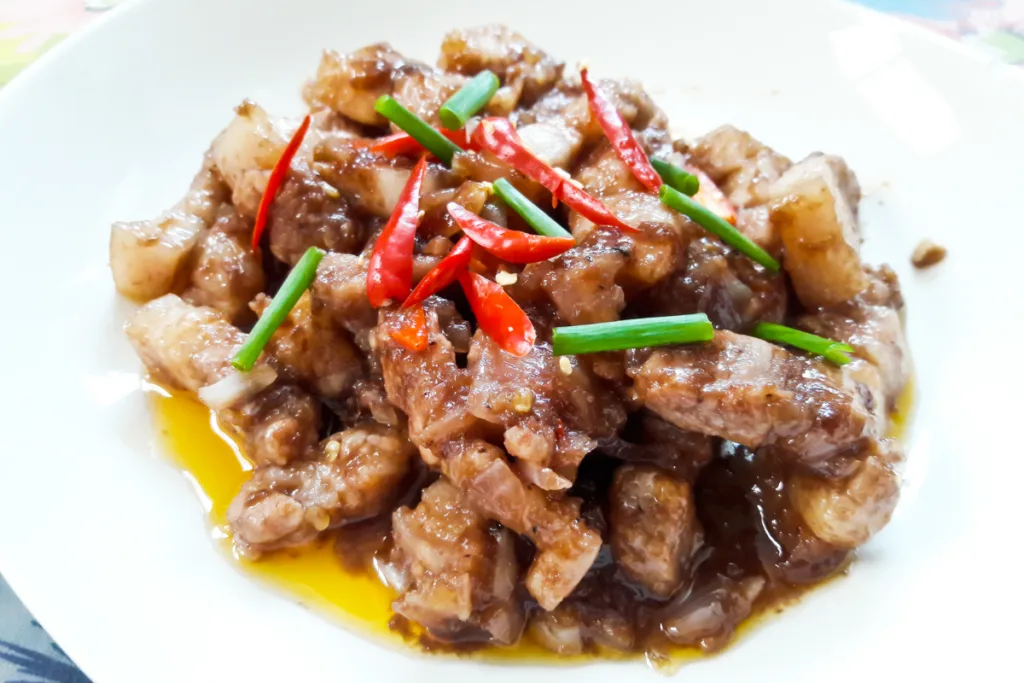
💡 Best Substitutes for Shrimp Paste
Miso Paste
1 tablespoon of shrimp paste = 1 to 2 tablespoons of miso paste
Miso paste is a great alternative to shrimp paste if you’re looking to add a similarly rich, umami flavor to your dish. It’s made from fermented soybeans and has a slightly sweet and savory flavor that’s not as strong as its counterpart. If you’re also gonna buy miso paste, it’s best to look for “shiro” or “white” miso varieties, as they tend to have a milder flavor and lower salt content than darker varieties. But if you can’t find any, you can use miso paste substitutes instead.
Seaweed
1 tablespoon of shrimp paste = 2 tablespoons of seaweeds
Seaweed is a great vegan alternative commonly used in Asian cuisine. It’s used as a seasoning in soups, stews, and stir-fries. Different varieties of seaweed are available, with some being more suitable as a shrimp paste substitute than others. Nori has a mild flavor that can complement other ingredients in a dish. Kombu, on the other hand, is often used to make dashi and has a stronger flavor. So, when always picking a type, make sure it matches the flavors already present in your dish.
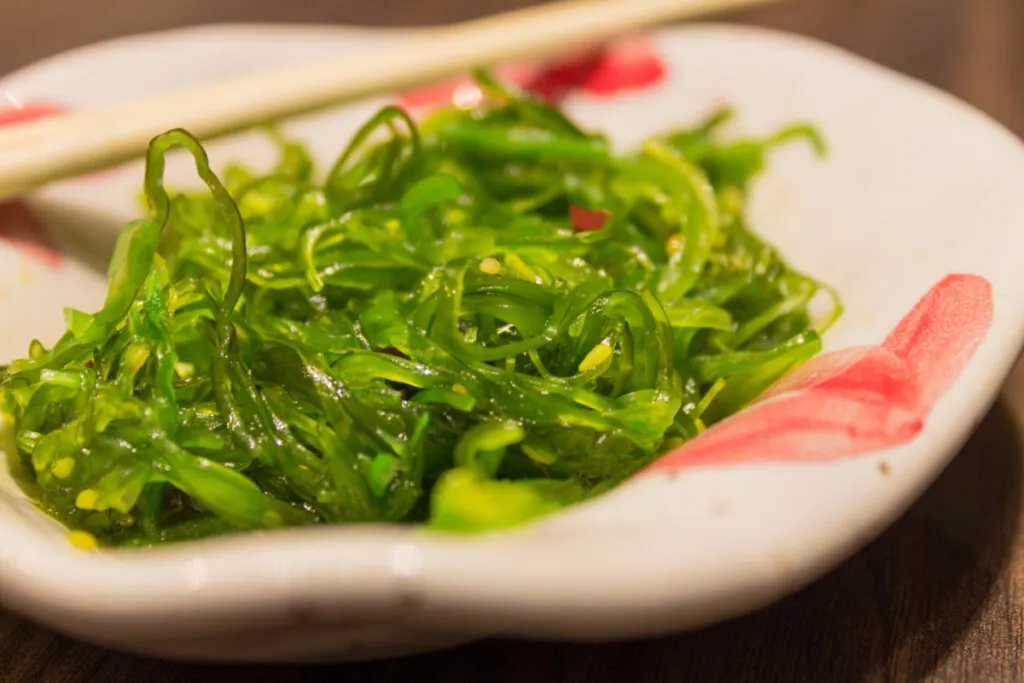
Fish Sauce
1 tablespoon of shrimp paste = 1 tablespoon of fish sauce
Fish sauce is a popular and widely available substitute commonly used in Southeast Asian cuisine. Made from fermented fish, it has a strong, salty flavor that can add a similarly rich, fishlike flavor. Fish sauce and soy sauce share similar traits except for the fishlike flavor this sauce has. It also has a different texture and consistency, so adjust the amount used depending on the recipe.
Soy Sauce
1 tablespoon of shrimp paste = 1 tablespoon of soy sauce
Soy sauce, whether light or dark soy sauce, is a very common pantry item with a salty, savory flavor. The sauce is a superb choice for people who are vegetarian or vegan and don’t consume shrimp paste. However, it does lack the same umami-rich taste that shrimp paste has. It’s also a liquid, so it won’t provide the same texture, but its convenience makes up for it. If you don’t have any, you can use light soy sauce substitutes and dark soy substitutes instead.
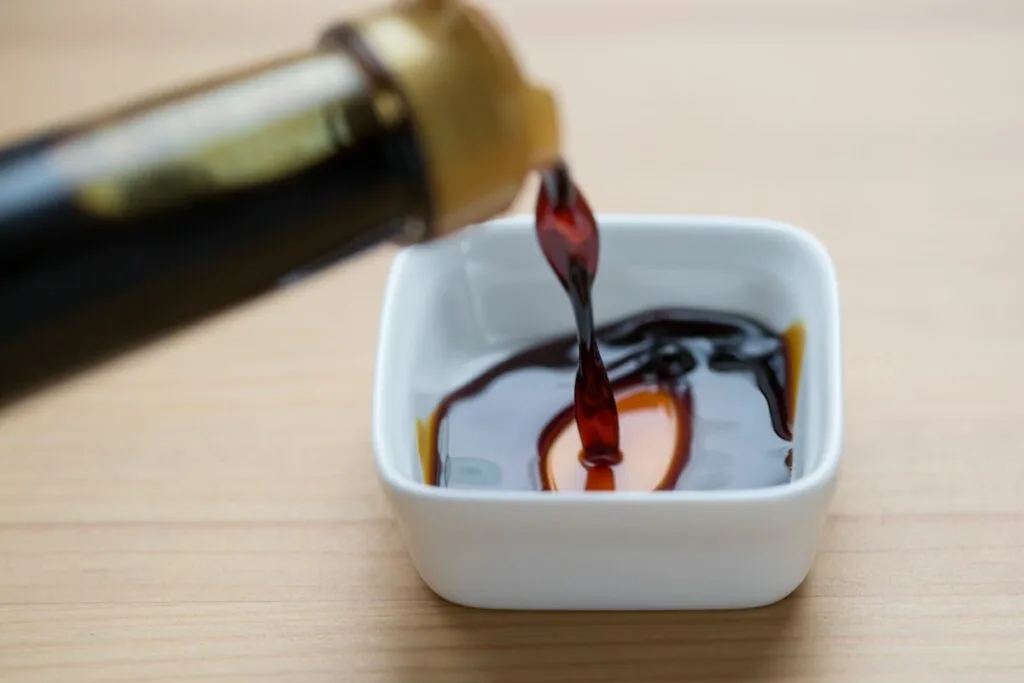
Tamari
1 tablespoon of shrimp paste = 1 tablespoon of tamari
Tamari is a great Japanese gluten-free soy sauce made without wheat. This soy’s main similarity to shrimp paste is the rich umami flavor that’s perfect for vegans and vegetarians. The same can’t be said for salt content, as it’s much saltier than shrimp paste and is also a liquid. You may need to adjust the amount you use, as it won’t provide the same texture or exact flavor.
Dried Shiitake Mushrooms
1 tablespoon of shrimp paste = 1 tablespoon of chopped dried shiitake mushrooms
Dried shiitake mushrooms are an excellent vegan substitute with a similar rich umami flavor. These mushrooms add a deliciously savory, earthy flavor to your dishes. They’re also a healthy addition to your diet, being a good source of fiber, protein, and antioxidants while being low in calories and fat. You’ll need to rehydrate them first by soaking them in hot water for about 30 minutes. Once soft, drain and finely chop them before using them.
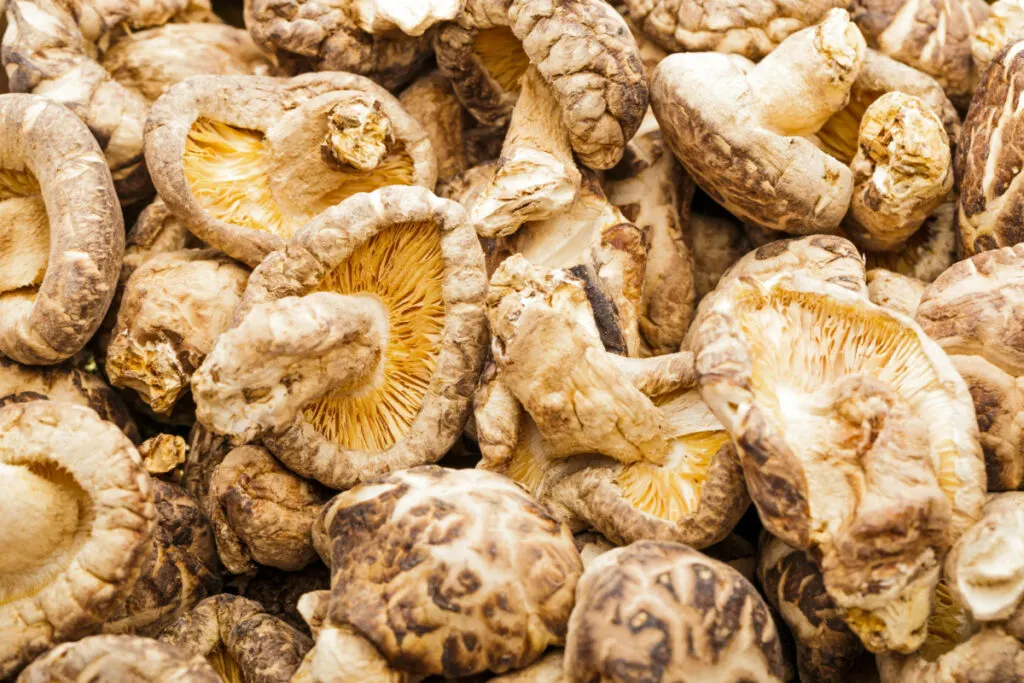
Anchovy Paste
1 tablespoon of shrimp paste = 1 tablespoon of anchovy paste
Anchovy paste is a uniquely flavored replacement for shrimp paste made from ground anchovies that have a strong, salty flavor. It’s a great vegan choice but does have a distinct flavor that may not be best for certain recipes. You should use this paste sparingly, as it can be overpowering if used in large amounts. Experiment with various amounts to achieve the desired flavor and adjust other seasonings as needed.
Bonito Flakes
1 tablespoon of shrimp paste = 1 tablespoon of bonito flakes
Bonito flakes can be a superb substitute for shrimp paste if you’re looking to add a unique umami flavor to your dishes. Made from dried, smoked, and fermented skipjack tuna, they’re low in sodium and calories while also a good source of protein. They also have a long shelf life but do contain histamines that can cause allergic reactions in some people. To use bonito flakes, grind them into a powder using a spice grinder or a mortar and pestle and use at will.
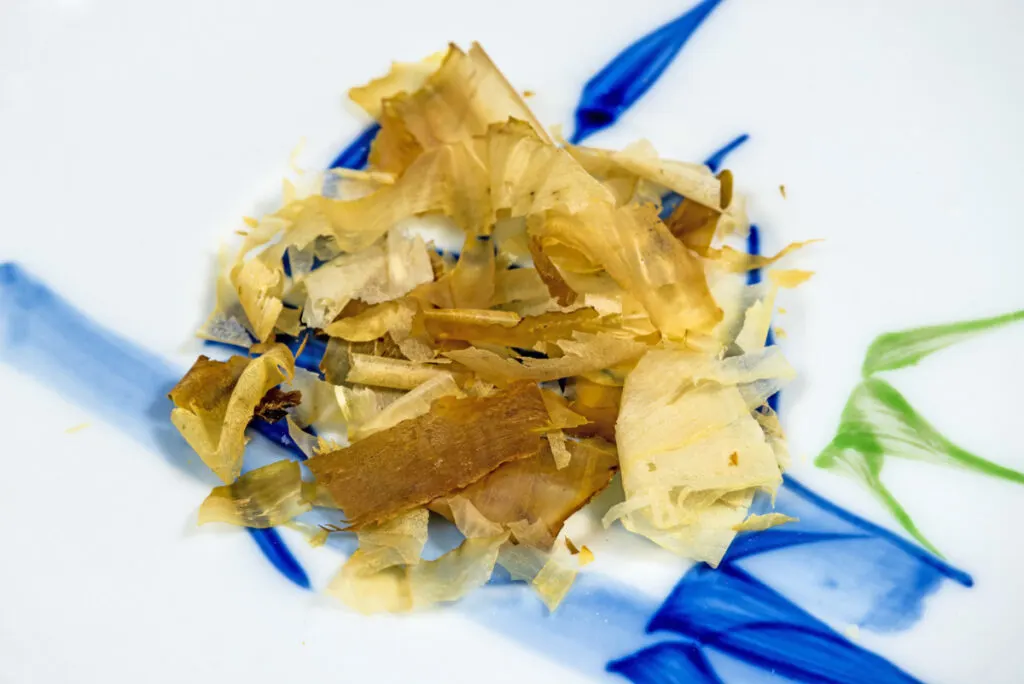
Oyster Sauce
2-3 tablespoon of shrimp paste = 1 tablespoon of oyster sauce
Oyster sauce is a perfect swap that also has a rich, umami flavor. Made from oysters, soy sauce, sugar, and other seasonings, it has a thick, syrupy texture that’s best used as a way to thicken sauces and marinades. Oyster sauce does contain gluten, meaning it’s not suitable for those with celiac disease or gluten intolerance. Some even contain MSG, so check the labeling first. To use it, just mix it with a little water to create a paste-like consistency.
🧐 FAQs
When stored in the fridge, it can last for up to a year. However, it’s important to note that the quality of the shrimp paste may deteriorate over time, and it may become less flavorful.
Shrimp paste has a strong, pungent flavor that’s often described as salty, fishy, and slightly sweet.
Some popular substitutes include fish sauce, soy sauce, miso paste, and oyster sauce. Each of these ingredients has a unique flavor profile, so you may need to experiment to find the one that works best for you.
